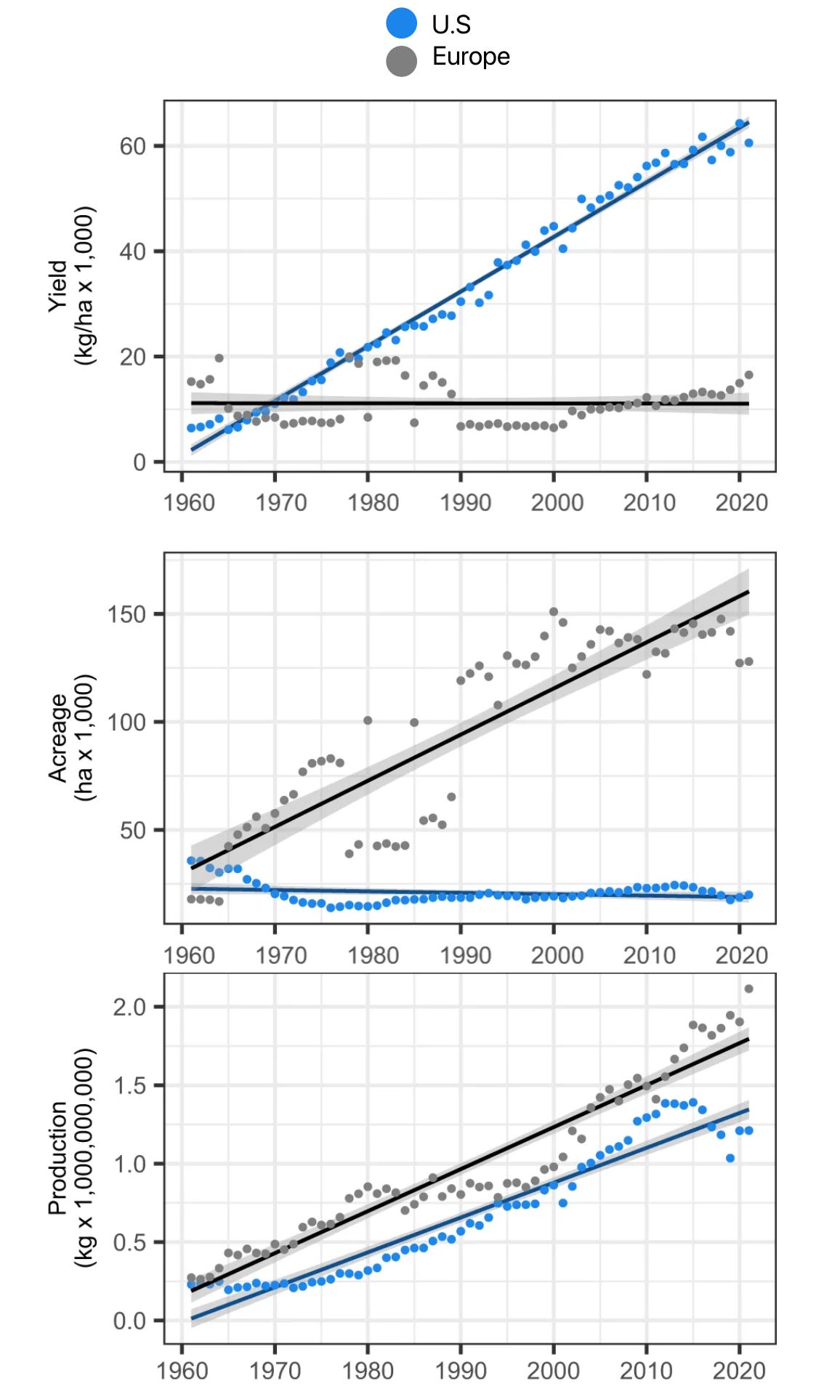Wealth & Poverty Review Strawberries In The U.S. Grew 2,755 Percent More Abundant Since 1960
Originally published at Gale Pooley's SubstackResearchers at UC Davis have documented the tremendous growth in yields for strawberries in California. Genetic gains from breeding and production advances increased yields by 2,755 percent from the early 1960s. The strawberry joins wheat, rice, and other staple crops of the Green Revolution.
Using a century of California data the researchers estimate that yields increased by 2,974 to 6,636 percent, counts by 1,454 to 3,940 percent, weights by 228 to 504 percent, and firmness by 239 to 769 percent.
The work of American plant scientists and entrepreneurs transformed strawberry production by creating a highly dependable, more accessible, and less perishable supply. The key discovery was the perpetual flowering gene that mediates daylength-independent flowering under a wide range of latitudes and temperatures. The researchers note:
“The societal impacts of the strawberry Green Revolution were modest by comparison, but influential nonetheless and symbolic of the contributions of plant breeding towards diversifying the year-round supply of fruits and vegetables, decreasing malnutrition, improving human health, and increasing food security.”
What is interesting is the difference in yields between the U.S. and Europe. Both produced more strawberries, but Europe did so by using more land while the U.S. did so by discovering new knowledge. The following charts are based on yield, area harvested, and production statistics compiled by the Food and Agriculture Organization of the United Nations. Statistics for the U.S. are displayed as blue dots, while Europe is displayed as gray dots. Linear regression slopes are shown as blue lines for the US and black lines for Europe with 95% confidence intervals for the predicted values shown as gray bands. Europe produced more strawberries by increasing land area by 398 percent while yields actually decreased by 1 percent. Increased production in the US was achieved by a 2,755 percent increase in yield and a 17 percent decrease in the area harvested. Europeans grew more strawberries by adding more land. Americans grew more strawberries by adding more knowledge. Knowledge can replace land and other natural materials, and there are no bounds on knowledge. This is why our potential to innovate is infinite.

Tip of the Hat: Jason Crawford and Steven J. Knapp.

